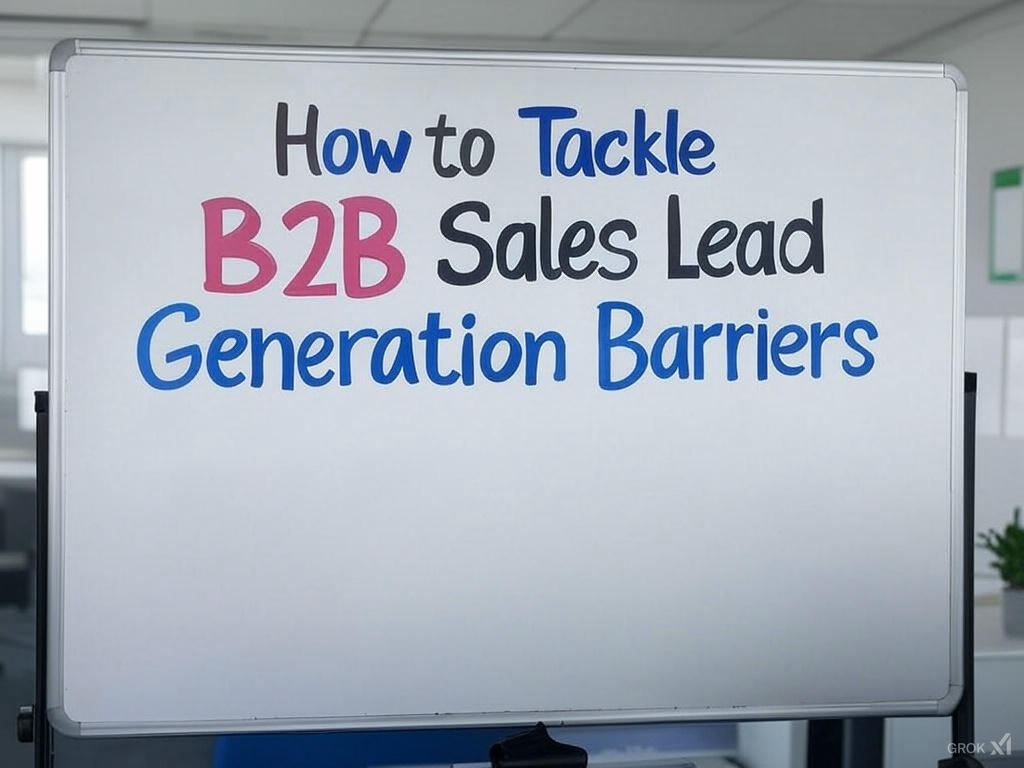Lead generation is an essential part of any B2B sales strategy. If done right, it can significantly boost your business’s growth by attracting the right kind of prospects. Whether it’s through digital marketing, outbound strategies, or full sales cycle engagement, the goal is always to bring in quality leads that convert into long-term clients. In this article, we will walk you through the key strategies involved in B2B sales lead generation, from inbound lead qualification to full sales cycle engagement, ensuring your efforts are targeted, efficient, and ultimately successful.
Inbound Leads Qualification: How to Filter the Right Prospects
Inbound lead generation is one of the most popular methods for attracting potential clients. It’s all about pulling prospects toward your business using effective marketing strategies like email marketing, PPS advertising, SEO, SEM, gifting campaigns, and direct mail.
The Role of Digital Marketing in Inbound Leads Generation
Digital marketing plays a massive role in driving inbound leads. When executed correctly, tactics like search engine optimization (SEO) and pay-per-click (PPC) advertising can help your business show up in front of the right audience. For example, ranking high in Google search results for relevant keywords makes it easier for prospects to find your products or services.
Moreover, email marketing can help nurture these leads, sending tailored content to people who have shown interest in your brand. By using automated workflows, businesses can filter out non-interested contacts, leaving only the most promising leads.
As part of your B2B sales lead generation strategy, leveraging these tactics ensures that you’re attracting the right audience to your business. The goal is to pull in leads who are already interested in your products or services, and from there, filter them for quality.
How to Qualify Inbound Leads
Once you’ve attracted prospects to your website or landing page, the next step is to qualify them. This process involves identifying whether a lead is a good fit for your product or service and whether they have the potential to convert.
Lead qualification criteria typically include:
- Demographics: Are they from the right industry or company size?
- Engagement: Have they interacted with your content or taken actions like downloading a white paper or signing up for a newsletter?
- Budget: Do they have the necessary budget to make a purchase?
- Timeline: Are they actively looking for a solution right now?
By qualifying leads early in the process, you ensure that you’re investing time and resources into prospects who are more likely to convert.
Appointment Setting: Connecting with the Right Decision Makers
Once your inbound leads are qualified, the next step is to schedule appointments and continue the conversation. Fractional outbound lead generation plays a significant role here. This involves reaching out to prospects who may not have directly expressed interest but are still a good fit for your service.
Reaching the Right People in the Right Companies
Appointment setting is about connecting with decision-makers at the right companies. This process requires a deep understanding of your Ideal Customer Profile (ICP), including the job titles, industries, and types of companies that would benefit from your solution.
For example, if you’re selling HR software, you’ll want to target HR directors or chief HR officers within companies. These individuals have the authority to make purchasing decisions, and they’ll be most interested in your solution.
Effective Appointment Setting Strategies
Successful appointment setting requires a combination of personalized messaging, persistence, and multiple communication channels. Here are a few tactics:
- Cold calling: Though often seen as outdated, it remains one of the most direct ways to engage with prospects.
- Email outreach: Personalize your emails to speak to the specific pain points of each prospect. Tools like Outreach.io can automate this process, improving efficiency.
- Social media: Leverage platforms like LinkedIn to connect with decision-makers and set appointments.
Qualified Lead Generation: Hunting for New Opportunities
Sometimes, the best leads don’t come through inbound marketing. This is where a dedicated Business Development Manager (BDM) or Sales Development Representative (SDR) comes into play. They are tasked with actively seeking out new business opportunities within your ICP.
The Role of BDMs and SDRs
A BDM or SDR acts like a “hunter” within your sales team. They’re responsible for prospecting new leads, reaching out to them, and qualifying them to determine whether they are a good fit. By using advanced lead research tools like LinkedIn Sales Navigator, they can uncover hidden opportunities and expand your network.
Deep Qualifying Leads into Your Sales Funnel
The main goal of qualified lead generation is to get leads deeply embedded into your sales funnel. After identifying high-potential leads, your SDR or BDM should focus on:
- Building relationships: Engage with leads through meaningful conversations that address their pain points.
- Identifying needs: Understand their specific business challenges and offer tailored solutions.
- Nurturing: Offer valuable content, such as case studies, white papers, or webinars, to build trust and further educate the prospect.
Tools for Qualified Lead Generation
There are various tools available to support your SDR/BDM in generating and qualifying leads. Some popular options include:
- HubSpot CRM: For tracking lead progress and automating communications.
- Salesforce: A powerful CRM system that helps streamline the entire sales process, from lead generation to closing.
- ZoomInfo: A data tool to help find contact details for prospects in your ICP.
By focusing on hunting for the right opportunities, your SDRs/BDMs can bring in fresh leads that have a higher likelihood of converting into long-term customers.
Full Sales Cycle Engagement: Owning the Prospect’s Journey
Now that you have qualified leads, it’s time for a dedicated sales professional to step in and guide prospects through the entire buying cycle. This is where full sales cycle engagement comes into play.
Understanding Full Sales Cycle Engagement
From the moment a prospect expresses interest to the point where they make a purchase, your sales team is responsible for guiding them through the process. This includes:
- Initial outreach: Setting the stage and understanding the prospect’s needs.
- Product demonstration: Showcasing how your product or service solves the prospect’s specific problems.
- Objection handling: Addressing any concerns they have and reinforcing the value of your solution.
- Closing: Finalizing the sale by getting the prospect to commit.
A dedicated salesperson should be committed to guiding the prospect through these stages, ensuring that the journey is as smooth and as personalized as possible.
Nurturing Relationships for Long-Term Success
Even after closing the deal, the journey doesn’t end. Your sales team should continue nurturing the relationship, ensuring that customers remain satisfied with their purchase and that they’re more likely to refer you to others or purchase additional services down the line.
Conclusion: Creating a Seamless Path to Success
B2B sales lead generation is an ongoing process that requires a combination of inbound marketing strategies, outbound outreach, qualified lead generation, and full sales cycle engagement. By carefully qualifying inbound leads, setting the right appointments, hunting for fresh opportunities, and guiding prospects through the entire buying journey, you set your business up for long-term success.
Remember, quality leads are the foundation of successful sales. By focusing on nurturing relationships, utilizing the right tools, and having a dedicated sales team, you’ll be well on your way to converting leads into loyal customers who not only stick around but also spread the word about your business.






